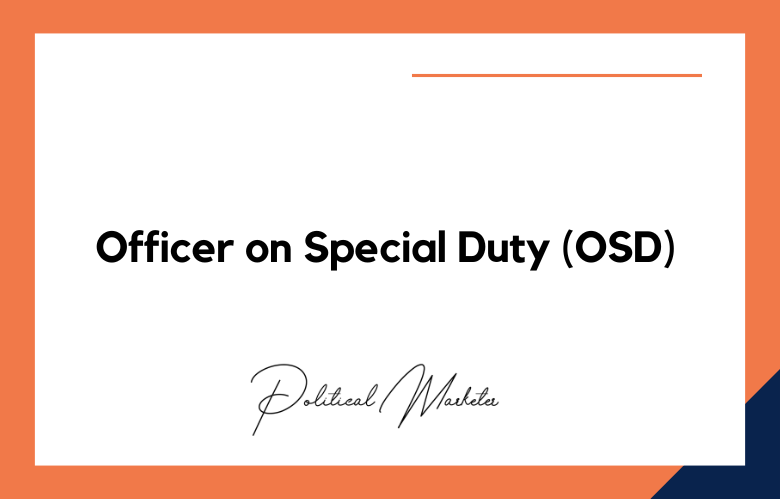In any political campaign, creating awareness and visibility are crucial factors to winning. One of the most effective ways to achieve this goal is through signage.
Indoor and outdoor signs create a visual identity and increase exposure for your candidate, political party, or campaign message. However, not all signage is created equal.
Specific steps must be taken to effectively and efficiently use signage to boost your political campaign. We will be discussing how to utilize signage to promote a political campaign.
How Can Signage Help Push Your Political Campaign Forward
Running for public office is never easy, but it can become a successful and rewarding experience with the right strategies. Utilizing signage is one such strategy that has proven effective in boosting political campaigns.
From yard signs to billboards, banners, and posters, political candidates can increase their visibility, establish credibility, and connect with potential voters. This article will explore how signage can help push your political campaign forward.
How to Effectively Utilize Signage to Boost a Political Campaign
Gaining support and attention for your political campaign requires strategic marketing tools and materials that strongly impact your audience.
One of the most effective ways to achieve this is through signage. Signage has been proven to be an influential medium that helps politicians promote their campaigns, reach out to more people, and gain the confidence and trust of voters.
This article will discuss using signage to boost your political campaign.
The Power of Signage in Boosting Political Campaigns
When it comes to political campaigns, every detail matters – from the words in your speeches to the color of your campaign materials. One element that can have a significant impact on the outcome of an election is signage.
While it may seem an afterthought, the proper signage can help you communicate your message effectively, build name recognition, and drive voter turnout.
We’ll explore how signage can boost a political campaign and provide practical tips for creating impactful signage.
Determine What Type of Signage Works Best for Your Campaign
The first thing you need to do when planning to use signage is to determine what type of signage works best for your campaign.
There are various types of signage, such as yard signs, billboards, and banners. Yard signs are the most common type of signage used in political campaigns and are handy for local elections.
Billboards are great for state or national elections, as they can target a broader audience. However, they are also more expensive.
Banners can be used in parades, conventions, or rallies, hung from buildings, or held by supporters. They are determining what kind of signage your campaign needs will help you focus your resources in the right direction.
Design the Right Signage:
The design of your signage can either make or break your campaign. Creating attractive, attention-grabbing signage that captures your candidate’s message and platform is essential. The text must be legible, visible from a distance, and placed strategically.
The message must be coherent and concise yet powerful enough to spark interest in your campaign. A well-designed sign is not only appealing, but it will also increase the visibility and credibility of your candidate.
Identify Strategic Signage Locations:
To maximize the exposure of your signage, you need to identify strategic locations to place them. Consider areas with high traffic and foot traffic, such as bus stops, busy intersections, community centers, and public spaces.
Ensure you have permission to place your signage in your chosen location to avoid legal issues. Also, position your signage effectively in that location to make it visible to passersby.
Use Digital Signage:
Digital signage has revolutionized advertising and can be essential to your political campaign. It provides a more dynamic and interactive way of reaching your target audience.
You can use digital signage to showcase photos, videos, or interactive graphics highlighting your candidate’s achievements, message, and platform. Digital signage can be placed in high-traffic areas or specifically targeted locations, adding a modern and high-tech vibe to your campaign.
Implement Signage Tracking:
Tracking is a vital aspect of any marketing campaign, and the same applies to political campaigns.
Ensure you track the number of signs you have deployed and their locations. Doing so will give you insight into which signage locations bring in traffic and which do not.
Such knowledge helps make informed decisions on what changes to make in your next move.
You can also track the number of people who scan the QR code and attend your campaign events, which can give you an idea of the effectiveness of your signage campaigns.
Use Signage During Events:
Political campaigns usually have rallies, speeches, and other events. Use this opportunity to showcase your signage, both indoors and outdoors. Have signs placed strategically so they are visible to attendees?
Also, display your digital signage to showcase your candidate’s platform, past achievements, and vision for the future.
Conclusion:
The importance of signage in any political campaign cannot be underestimated. It is a medium that aims to persuade, inform, and impact your audience.
By developing the correct type of signage, creating an eye-catching design, placing it in high-traffic areas, running signage campaigns, and monitoring your performance, you can make a lasting impression that will help boost your political campaign.
Follow the tips and strategies mentioned in this article, and you’ll surely see a positive impact on your political campaign.
Call: +91 9848321284
Email: [email protected]
How to Utilize Signage to Boost a Political Campaign: FAQs
What role does signage play in political campaigns?
Signage serves as a constant visual reminder of a candidate’s presence, reinforcing name recognition and building familiarity with voters in public spaces.
How early should campaign signs be deployed?
As early as legally allowed. Early deployment helps establish visibility, prime voter recognition, and claim strategic physical spaces.
Which types of political signs are most common?
Yard signs, billboards, banners, window signs, vehicle wraps, digital signboards, and handheld placards used during rallies or marches.
What makes a political sign effective?
Simplicity, bold typography, high contrast colors, clear candidate name, election date or position, and possibly a slogan.
Do signs actually influence voter behavior?
Yes. While they may not change strong opinions, they increase name recall, normalize candidate visibility, and may influence undecided or low-engagement voters.
Where should political signs be placed for maximum impact?
High-traffic intersections, supporter yards, community gathering spots, college campuses, highways, polling stations, and event venues.
Are there legal restrictions on where signs can be placed?
Yes. Placement laws vary by jurisdiction. Many cities restrict signage on public property or near polling places, and require removal by certain dates.
Can signage be used for microtargeting?
Indirectly. Placing signs in specific neighborhoods can signal community endorsement and strategically appeal to demographic segments.
How can digital signage enhance a campaign?
Digital signs offer flexibility for updates, animations, and audience-specific messaging based on time or location, increasing dynamic voter engagement.
What are eco-friendly alternatives for campaign signage?
Recyclable materials, biodegradable stakes, reusable banners, and digital alternatives help campaigns reduce environmental impact.
Should campaign signs include a website or QR code?
Yes. Adding a campaign URL or QR code allows interested viewers to easily learn more or take action, bridging offline-to-online engagement.
How do volunteers help with signage deployment?
Volunteers identify locations, seek permissions, distribute signs to supporters, and ensure proper placement and maintenance across zones.
What is “sign-waving” and does it work?
Sign-waving is when supporters hold campaign signs at key locations (like intersections) to draw attention. It’s highly visible and energizes supporters, especially near voting days.
Can signage support multilingual voter outreach?
Yes. Signs in regional or minority languages demonstrate cultural sensitivity and increase accessibility among diverse voter bases.
How should vandalized or removed signs be handled?
Keep records, report incidents if malicious, and replace them promptly. It’s important to maintain presence and avoid appearing neglected.
What’s the best size for a yard sign?
Common sizes are 18×24 inches or 24×36 inches—large enough to be readable from a distance, but manageable for residential placement.
Are slogans necessary on campaign signs?
Not always, but a short, memorable slogan can reinforce messaging. If space is limited, prioritize name and position.
How can signs be integrated into a broader campaign strategy?
Signage should align with branding, color palette, and slogan across all platforms—creating visual consistency in digital, print, and event materials.
What is the lifespan of a typical campaign sign?
Depending on weather and material, yard signs can last weeks to months. Durability improves with corrugated plastic and UV-resistant ink.
Is signage still relevant in the digital age?
Absolutely. While digital dominates media spend, physical signage offers local visibility, grassroots authenticity, and complements online presence.











